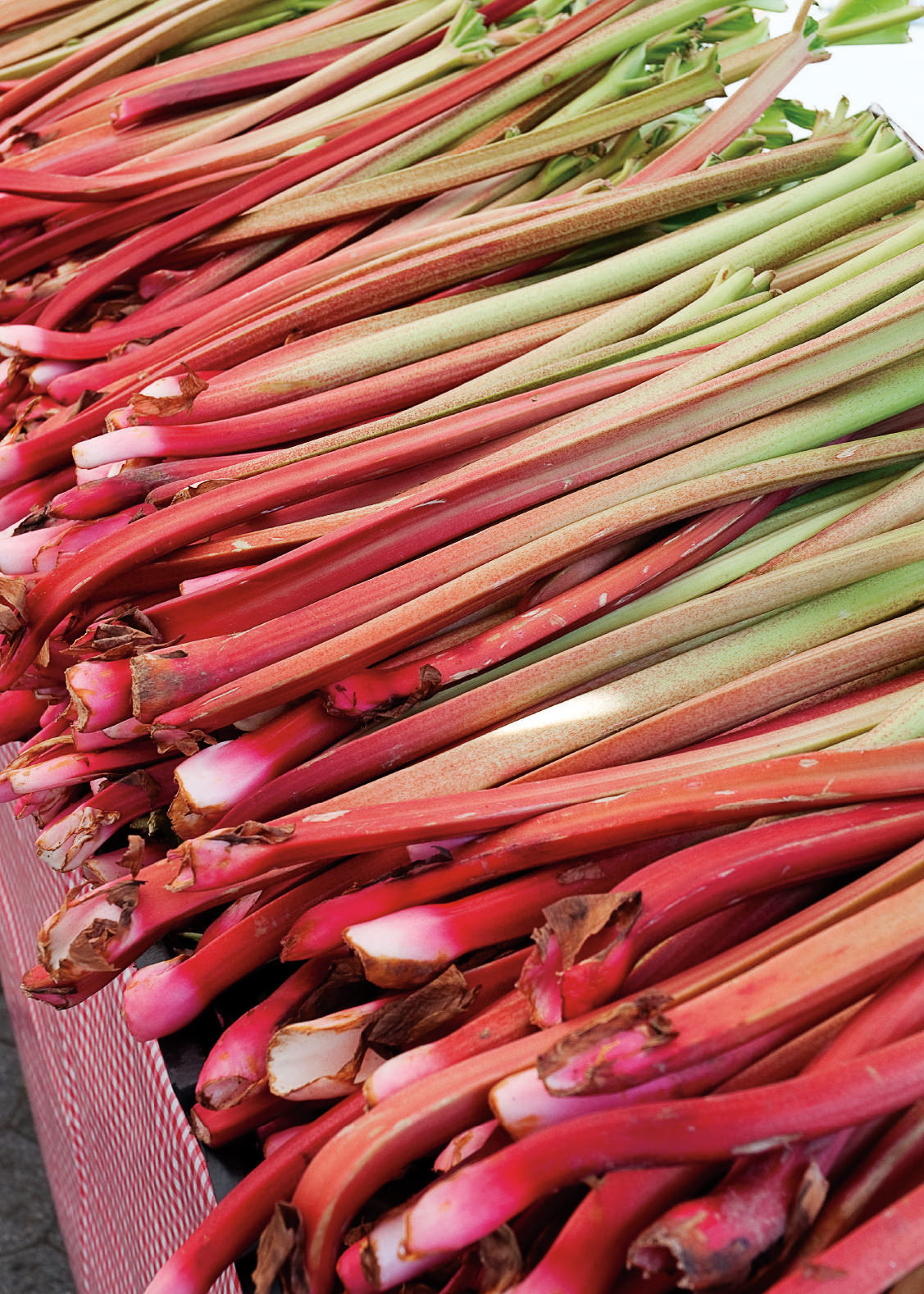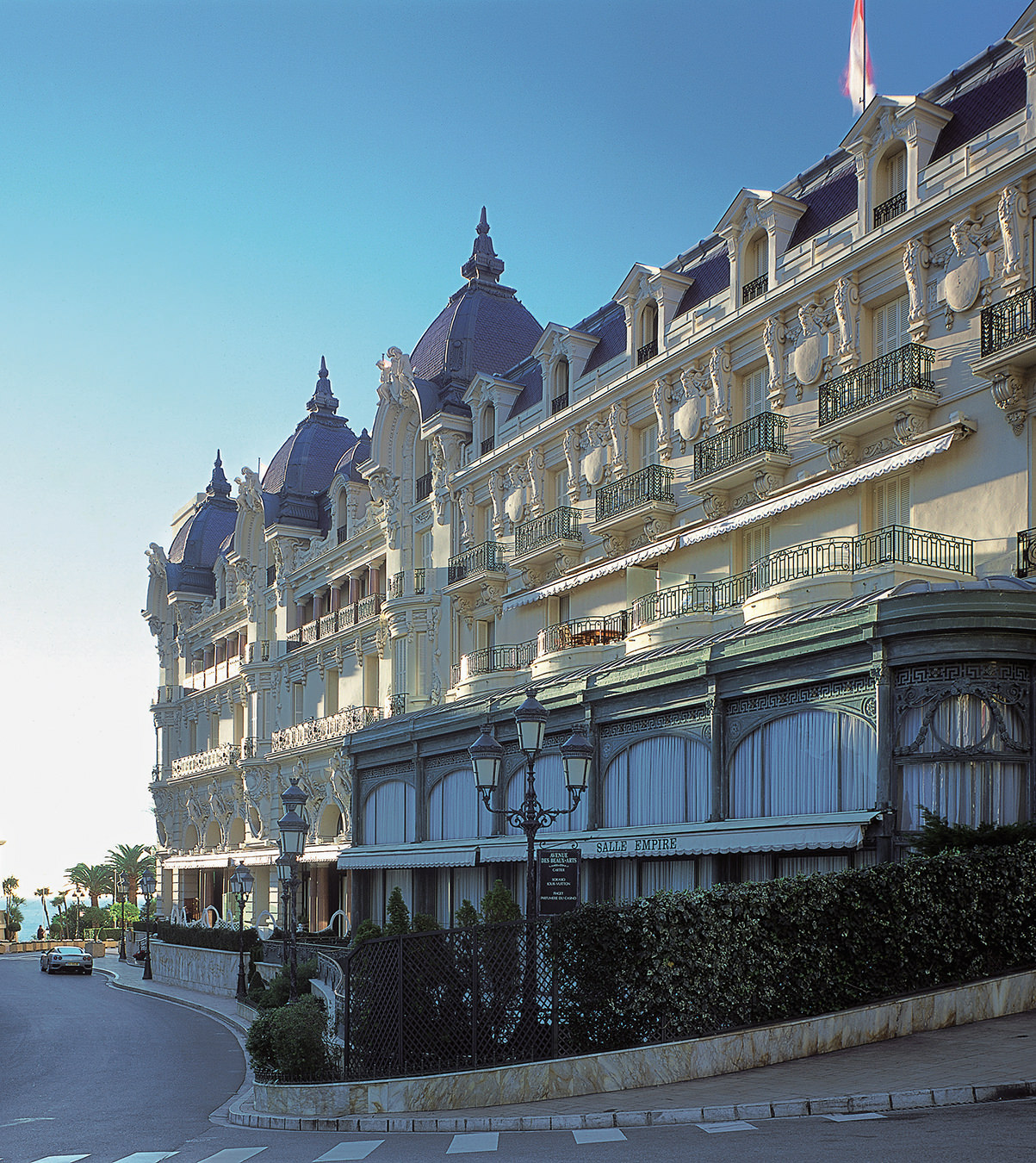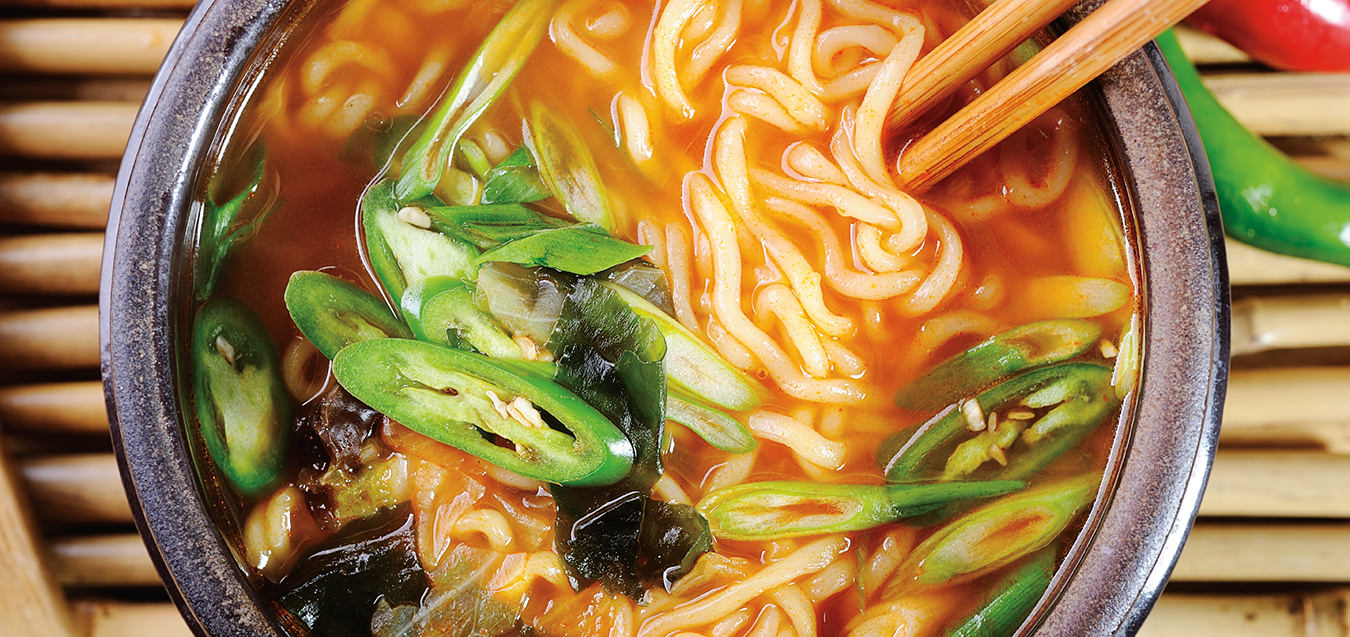-
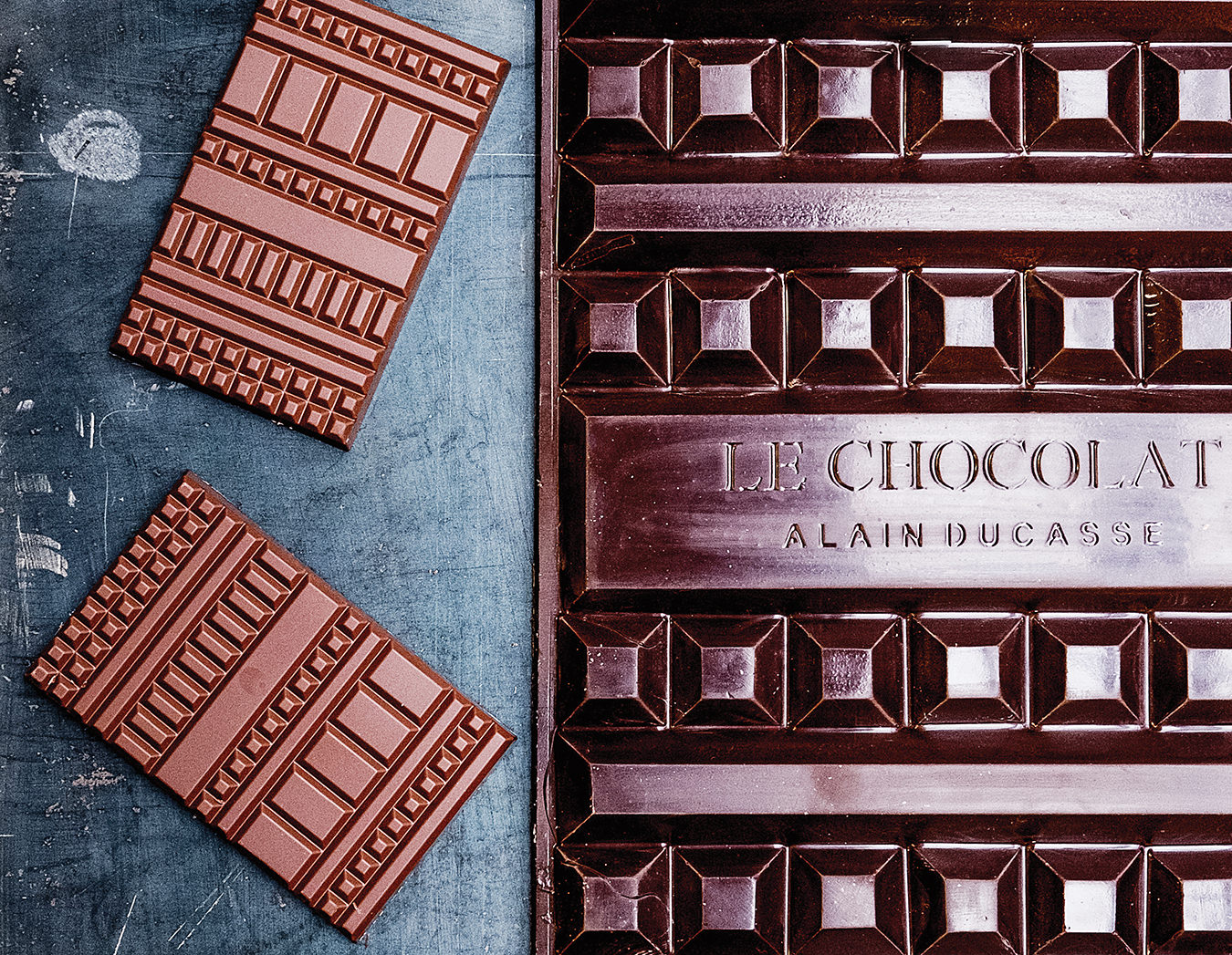
-
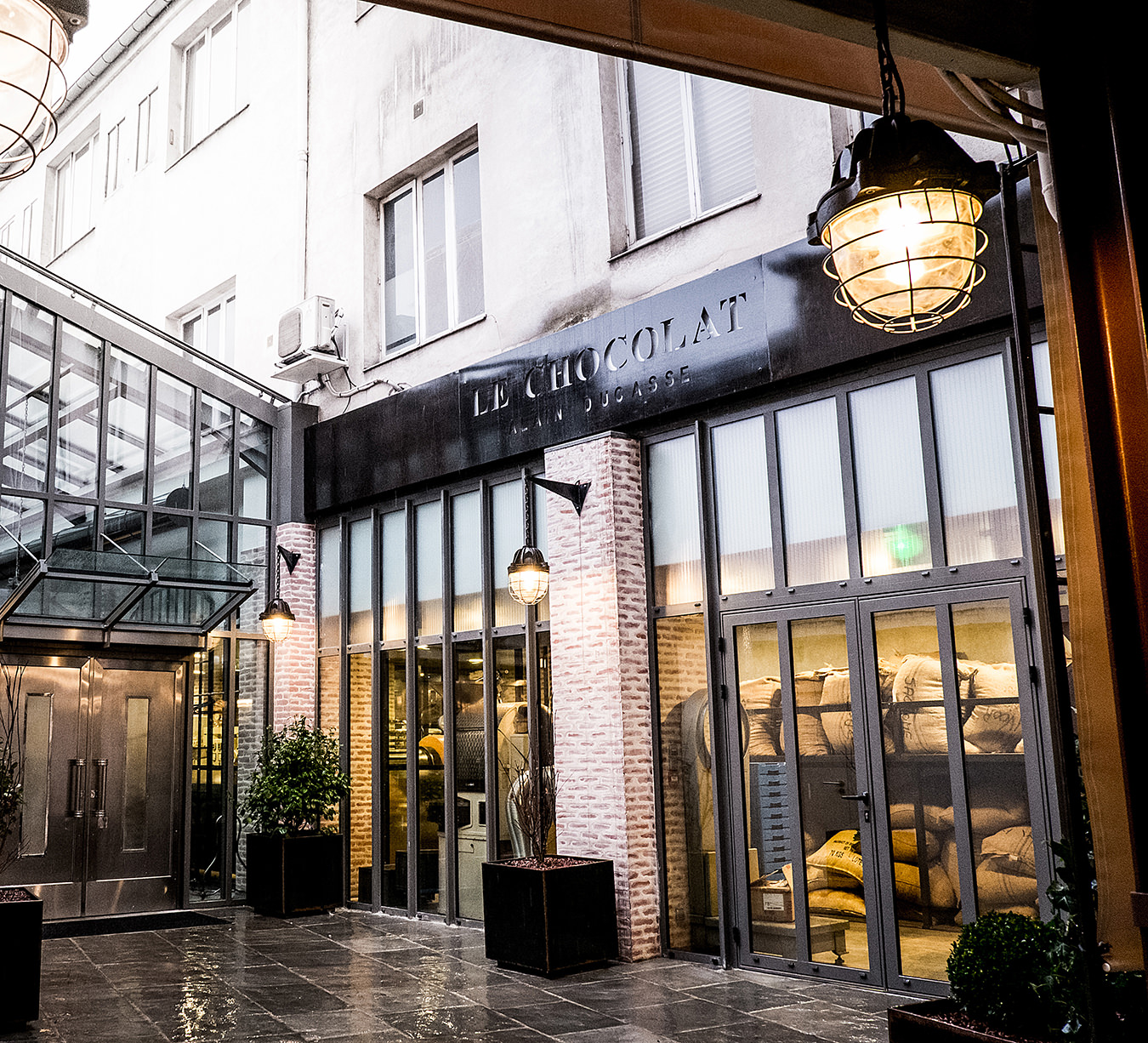
La Manufacture du Chocolat d’Alain Ducasse in Paris, France.
-
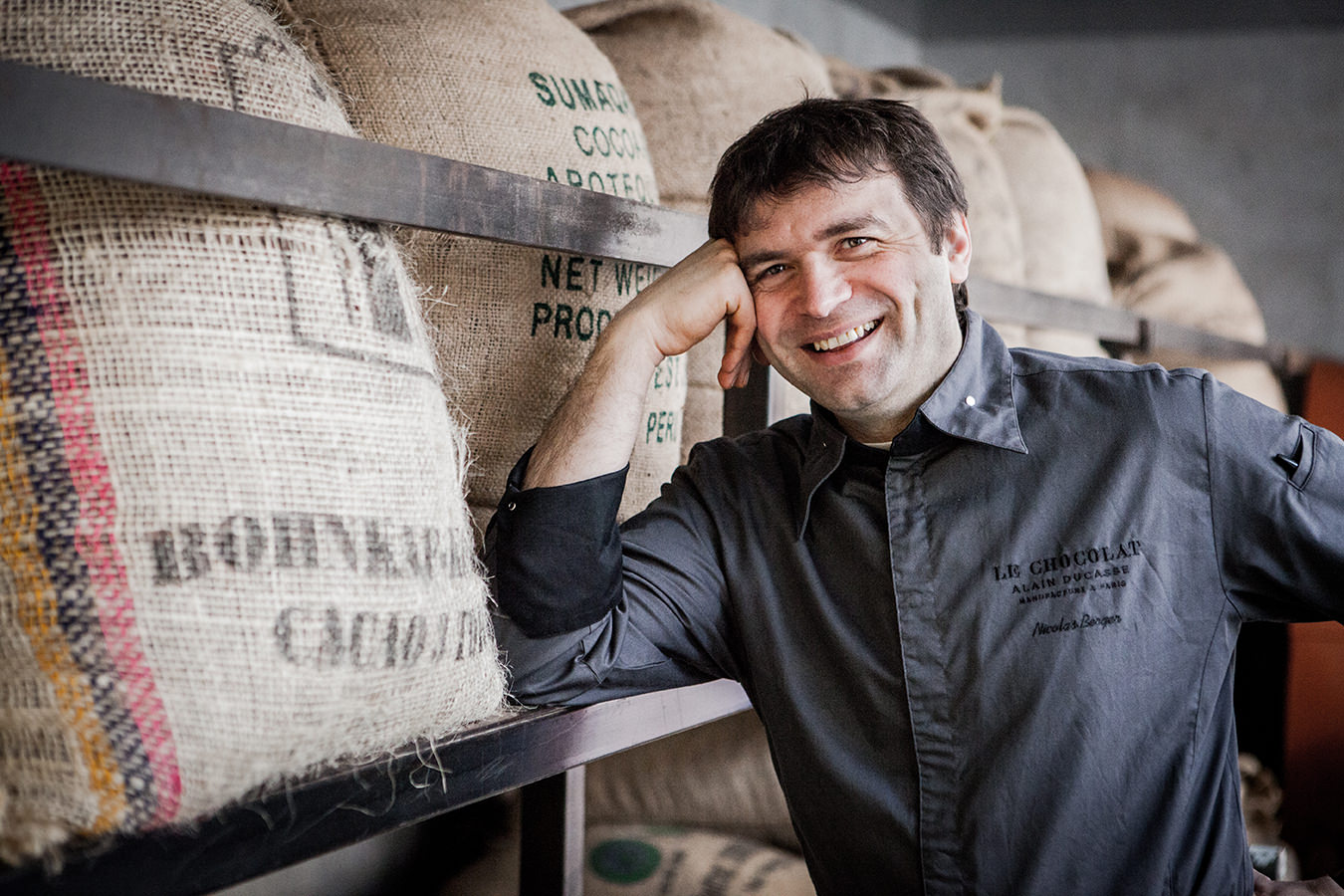
Head chocolatier Nicolas Berger.
-
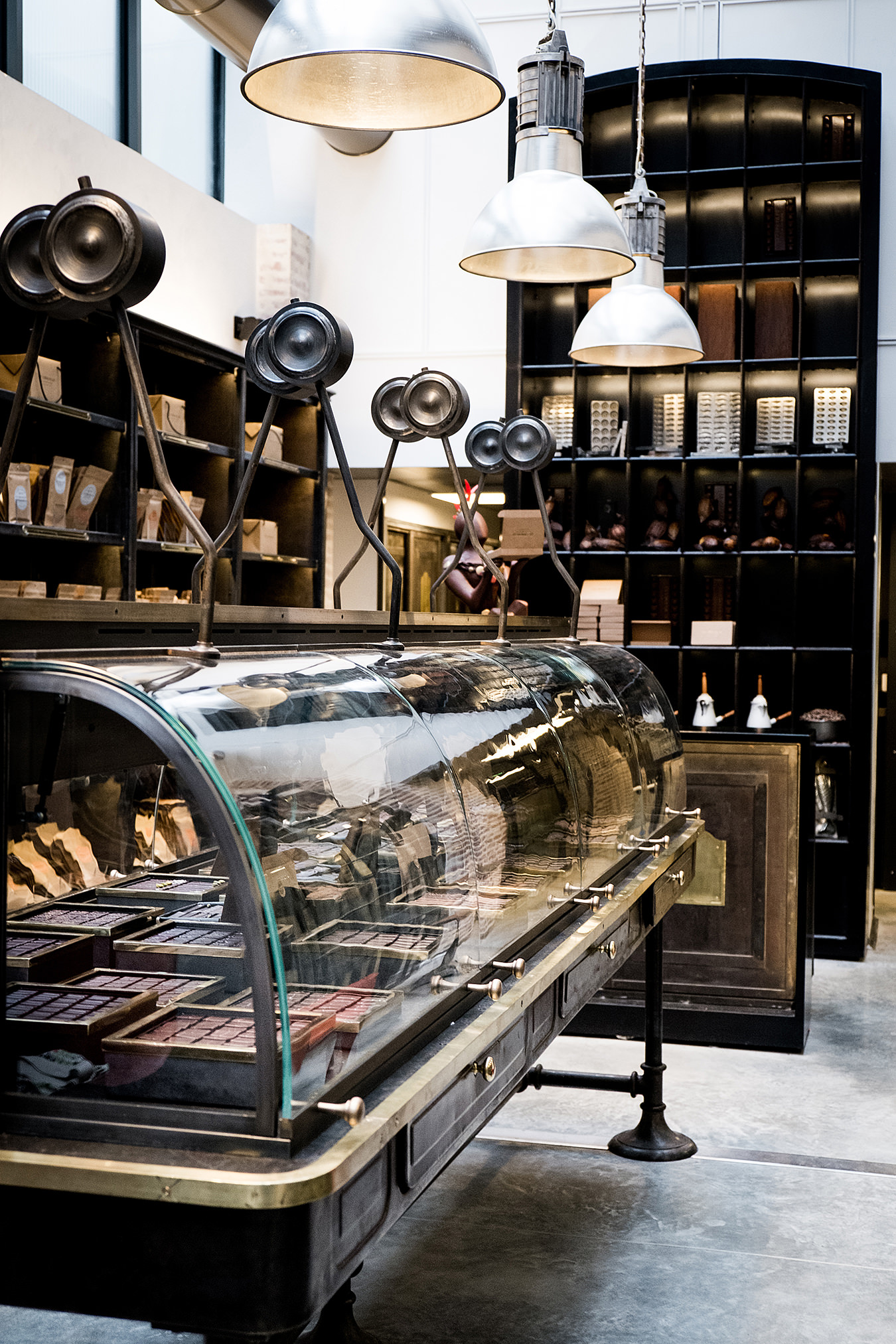
The boutique in La Manufacture du Chocolat d’Alain Ducasse.
-
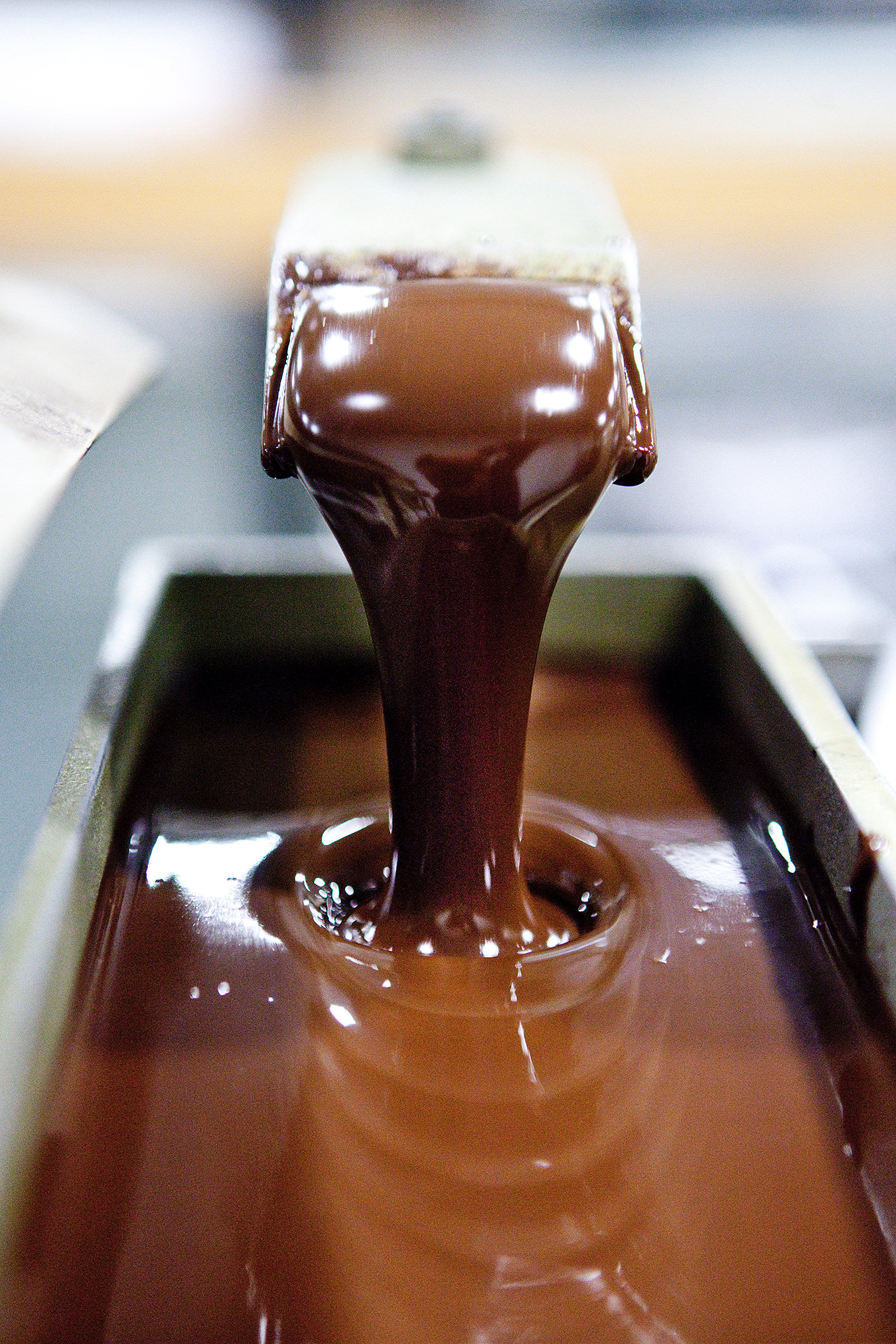
Chocolate fondue.
-

Tablettes emballées.
Alain Ducasse’s Sweet Atelier
Bean-to-bar chocolate.
The walk up to La Manufacture de Chocolat d’Alain Ducasse is not as swish as one would expect. The usual Parisian Ducasse establishments are located in posh hotels like the Hôtel Plaza Athénée and Le Meurice, on picture-postcard-pretty streets in bistros like Benoit and Aux Lyonnais, or even atop the Eiffel Tower at the magnificent Le Jules Verne. But this latest endeavour is situated in a converted Renault garage a short walk from Place de la Bastille in the 11th arrondissement. Despite the somewhat gritty surroundings, when you enter the shop on rue de la Roquette, you’re hit with the most luxurious of aromas: chocolate. And not just any chocolate but chocolate made in the open manufacture (workshop) on-site. This chocolate is so pure, all that’s missing is the cocoa plantation out back.
The title chocolatier is often used to describe a chef who makes chocolates. But in the case of La Manufacture de Chocolat, the descriptor also refers to the man who makes the chocolate itself. Head chocolatier Nicolas Berger is a skilled pastry chef who worked in top Parisian patisseries and chocolateries prior to meeting Alain Ducasse in New York in 2000. Berger was hired to run the pastry departments of Ducasse’s JW Marriott Essex House New York (the restaurant has since closed) and Hôtel Plaza Athénée restaurants before eventually becoming executive pastry chef of the entire empire. Twelve years later, the two chefs realized a mutual dream to produce artisanal chocolate right in the heart of Paris. Their factory, along with its industrial-chic shop, opened its heavy steel doors to the public in February of 2013. (The chocolates are also sold out of a separate storefront on rue Saint-Benoît as well as a corner at Galeries Lafayette Maison.)
Few may realize that when you purchase a bonbon from a fancy chocolaterie, chances are the chocolate part of the candy equation (known as couverture) was not made in house. The majority of chocolatiers, no matter how famous, purchase their chocolate from industrial chocolate makers such as Cacao Barry/Callebaut, Belcolade, and so on. But now chefs like Berger are taking chocolate making a big step further by producing their own chocolate from bean to bar. The ultimate goal of these artisans is to produce chocolate in small batches to best exploit each bean’s terroir, along the lines of tea and, especially, wine. The movement is taking hold in North America, where sought-after brands include Mast Brothers, Askinosie Chocolate, and Soma Chocolatemaker in Toronto. In France there are several famous bean-to-bar confectioners, such as Bonnat, François Pralus, Chocolaterie A. Morin, and Lyon’s renowned Bernachon, as well as more large-scale producers of similar terroir-driven chocolates like Valrhona, Michel Cluizel, and Amedei in Italy.
Making chocolate from scratch is no mean feat. Berger manufactures both dark and milk chocolate two to three times a week using small-scale—mostly vintage—Italian and German machines he sourced and adapted to his needs. The key steps begin with the torréfaction (roasting), the concassage (crushing), and the mixage (addition of cocoa butter, sugar, lecithin, and vanilla, plus powdered milk for milk chocolate). Next comes the raffinage (pulverizing to 20-micron-sized particles) of the beans, then the conchage (kneading of the paste) to enhance the chocolate’s fluidity, diminish its acidity, augment the taste, and refine the texture. Yet, ultimately, it is the selection of the beans that Berger emphasizes most.
Like a winemaker determined to use only pristine grapes, Berger seeks out the best beans. “It is the most delicate part of the process,” he says. Berger’s beans are sourced from all over the planet, his favourites hailing from Venezuela, Madagascar, Indonesia, and Peru. Says Berger: “Different beans give you a different chocolate. They can be floral, maderized, lemony, or have a flavour of red berries. When you make chocolate, at first it is very acidic and strong, but then it neutralizes. I once made chocolate with beans from New Guinea that resulted in a bar that tasted musky, leathery, animal. I wasn’t comfortable selling that chocolate because clients want something easy. But Mr. Ducasse found it very interesting. I kept it and tasted it six months later. It was softer, more mellow.”
The resulting tablets and chocolates made at La Manufacture de Chocolat are minimalist in their look and packaging. This is gastronomic chocolate of the highest order. Bite into one of Berger’s tablets and you’ll feel the snap from high-quality cocoa butter followed by a silky texture as it dissolves on your tongue. The flavours that come forth in the bittersweet bars include berries, coffee beans, toasted chestnuts, and a touch of smoke. In the milk chocolate tablet there are hints of mango and salted caramel. The manufacture also supplies chocolate for desserts at Ducasse’s restaurants in Paris, Monaco, and London. For a taste of this unique product at the table, head to bistro Benoit, where the profiteroles are covered in a brilliant chocolate sauce made with this couverture.
Though they have been known to make exquisite Easter eggs and a wonderful chocolate/hazelnut spread, the manufacture emphasizes chocolates first and foremost. “[La Manufacture de Chocolat] is a low-key operation,” says Berger. “We wanted the look to be simple, to correspond to the work of an artisan. We are artists here. I wanted people to see what we do. And I wanted the store to be perfumed with that marvellous odour of chocolate.”
Mission accomplished.


